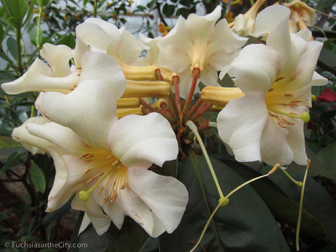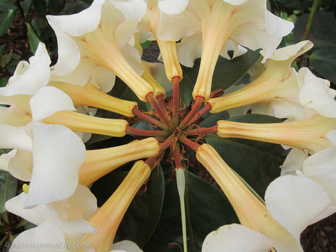The vireya rhododendrons at Planting Fields
Monday, March 24, 2014
The vireyas are in bloom again and right now is the time to take in their deletable beauty in the Camellia House at Planting Fields Arboretum on Long Island. The Arboretum has a very under-appreciated bevy of vireya species and cultivars. A collection almost unknown to the wider world, it might seem. Perhaps that’s because the Arboretum’s vireyas are grown in the Camellia House where most people in the region don’t think to find rhododendrons. Planting Fields does have masses of rhododendrons planted around the grounds as well. They’ll be blooming a little later in the season, though.
Vireyas are a different story. They’re too frost shy for the open garden on Long Island so they’re kept inside cohabiting with the collections’s tender camellias. At Planting Fields, the vireyas deservedly have their own gallery, though. To find them, you just need to stop being distracted by the exuberance of camellia blossoms and look for the small sign on a nondescript door off to the side. The one that simply says “Vireya Collection”, without any great fanfare or other attention getting devises. But go ahead, go on in. And be amazed.






‘Star Posey’ (pink), ‘Teddy’s Best’ (yellow) and ‘Glowing Embers’ (orange-red)


‘San Miguel’ and ‘Shaya’


‘Lucie Sorenson’ and ‘Rob’s Favorite’

‘Veronica Maureen’


‘Red Rocks’ and ‘Lucie Sorenson’


‘Rob’s Favorite’ and ‘Dixie’

‘Gardenia Odyssey’


‘Gardenia Odyssey’


Above, ‘Nancy Miller Adler’ and Rhododendron jasminflorum
Below, ‘Teddy’s Best’

The Fuchsia+Blog Tags — botanical gardens | greenhouses | plants | winter





















